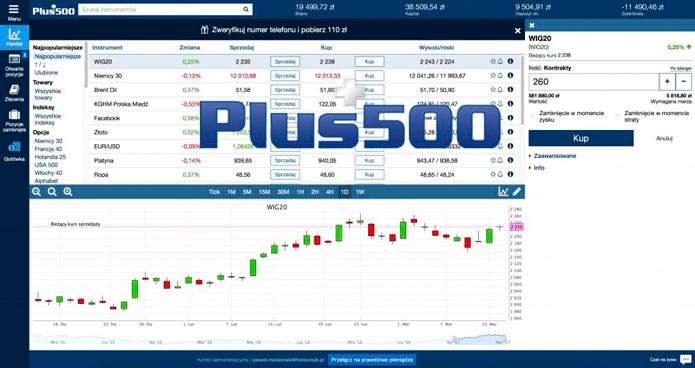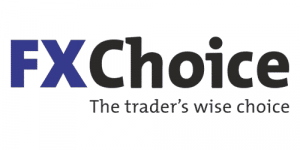Plus500 is a derivatives broker with financial instruments mostly in contracts for difference (CFDs). Armed with low trading fees and competitive spreads, its trading services are one of the emerging brands in the industry today.
Learn more about Plus500 – what it brings to the table for its clients, its set of trading conditions, trading features, and overall serviceability – by reading this detailed broker review.
Plus500 Pros and Cons
To help you set your sights on signing up with this broker, take a peek below at the advantages, as well as some drawbacks of subscribing to Plus500’s brokerage services.
Pros:
- an easy-to-use trading platform for beginners to quickly and efficiently navigate the trading facility (with its mobile app being one of the highest-rated CFD trading apps on Apple’s App Store and Google Play for its simplicity and advanced features);
- low trading fees (tight spreads and low commissions)
- a Negative Balance Protection for client accounts
- access to multiple languages and 24/7 email and live chat support; and
- a free demo account for Plus500 traders to test trading strategies without financial risks.
Cons:
- trading instruments limited to derivatives;
- inaccessible to U.S.-based traders (due to regulatory constraints);
- limited educational resources
Plus500 Regulation & Client Fund Safety
Plus500 is a product of Plus500 Ltd, an online trading company established in Israel way back in 2008. Its head office is situated in the city of London in the United Kingdom. Plus500 is duly authorized and regulated by the Financial Conduct Authority (FCA).
Apart from its FCA certification, Plus500 is also regulated in some other jurisdictions including Australia (Australian Securities & Investment Commission), Cyprus (Cyprus Securities and Exchange Commission), Israel, New Zealand (Financial Markets Authority), South Africa (Financial Sector Conduct Authority), Singapore (Monetary Authority of Singapore) and Seychelles (Seychelles Financial Services Authority).
Despite having multiple regulatory approvals, Plus500 fails to secure one that will enable the broker to cater to U.S.-based traders.
Relative to FCA’s standards in terms of client money use, Plus500 holds its client funds on a segregated basis. Clients also need not worry in terms of having negative balances due to trade losses since the broker secures its clients with a negative balance protection benefit.
With all these considerations, it goes without saying that your trading fund is secure and that a trading investment with the broker is totally safe.
Additionally, Plus500 shares have a premium listing on the Main Market of the London Stock Exchange and are a constituent of the FTSE 250 index.
Plus500 Trading Features and Fees
Financial Instruments
Servicing to over a million clients, Plus500 offers over 2,000 trading instruments in CFDs. These CFDs cover several financial markets including Shares, ETFs (including Deutsche Bank, Germany 30, Natural Gas, etc.), Indices (USA 500, France 40, and other global indices), Commodities (Gold, Silver, and Oil), Currencies (sixty pairs available), Options, and Cryptocurrencies.
Plus500 is accessible in over 50 countries with its site available in 32 languages.
Account Types
Plus500 provides its clients with a standard trading account in Gold Account. Traders, however, can apply for a Pro account provided that they are able to meet certain qualifications set by the broker. Higher leverage levels on selected instruments await professional traders (from 1:30 to 1:300). What’s more, they can switch back to the retail account without financial consequences.
Plus500 offers free demo accounts with no time limit. However, only one demo trading account is permitted to be accessed per client.
Trading Fees
Opening an account, the minimum deposit is $100. Clients depositing funds other than the prescribed fiat currency will incur a 0.5% currency conversion fee.
On the bright side, deposit and withdrawal transactions are free of charge. Note though, that exceeding the monthly limit for withdrawal transactions will incur an additional fee. Some of the payment methods include Visa, MasterCard, e-wallets (PayPal or Skrill), and bank funds transfers.
Lastly, Plus500 set an inactivity fee of $10/month when a trader becomes inactive for 3 months.
Trading Platforms & Tools
Plus500 offers its proprietary trading platform designed to suit traders using different trading devices. The web, desktop, and mobile versions of the platform are available for devices including iPhone, iPad, Android, and Windows.
Plus500 also has WebTrader which suits traders seeking a trading platform designed with ease and simplicity. Plus500 WebTrader features only the basic trading tools and a few advanced features for Risk-Management functions.
The Plus500 mobile app is equipped with over a hundred charting tools and some default watch lists. It has basic features including the product catalog, account details, and conditional orders. To provide more clarity during the analytical process, the dynamic charts can be extended to full-screen mode.
In terms of trading tools, Plus500 does not operate with a comprehensive educational amenity. The same is true with the broker’s research facility. In the Trader’s Guide, Plus500 traders can access a brief tutorial section on how to use various platform features, along with some basics on trading CFDs, understanding slippage, and how rollover works. Crestfallen on the available research tools, you won’t find the usual insightful features such as market news, market commentary, and live economic data.
Conclusion
Plus500 best suits traders whose trading preference is an easy-to-use trading platform to execute trades without any complexities. The broker’s main asset is its competitive spreads, which can also be available in other brokers.
Beginning traders may be at a disadvantage as they sign up with Plus500 for lacking sufficient education and research materials crucial for learning the basics of trading.






